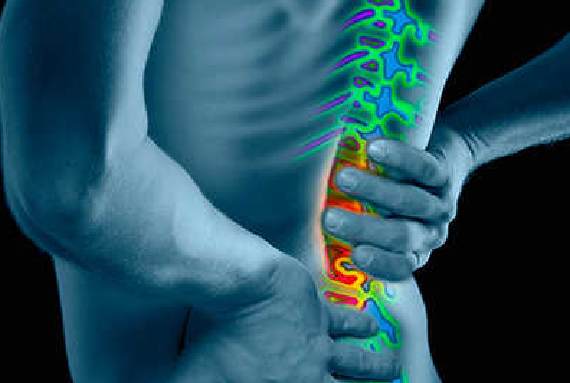
Nobody likes to be in pain especially when every move you make aggravates a sensitive lower back. With up to 80% of the community expected to experience back pain throughout their life, we should be thinking about back pain as more of a modern day health epidemic than just that old ‘pain in the back’. Supporting this line of argument are recent studies and reports that make the case for problems caused by back pain and the need for better pain management solutions.
‘The Global Burden of Disease Study’ by the World Health Organisation (WHO) labelled back pain a major cause of disability, affecting performance at work as well as overall levels of health and well being. The study also placed back pain amongst the top 10 conditions that contributed to ill health, disability or early death.
Another study entitled ‘The Continuing and Growing Epidemic of Chronic Low Back Pain’ looked at reports from the Institute of Medicine, National Institutes of Health, and the World Health Organization, and commented on “the urgent need for the development of better methods for pain and disability management because the ever-increasing costs associated with treatment approaches cannot be sustained.”
What are the causes of back pain?
There are many factors that contribute to back pain. While there is no one definitive cause, a multitude of factors may compound to cause a variety of lower back problems.
Common causes may include:
- Poor posture habits over time, such as slouching, working behind a computer or incorrect office ergonomics
- Sports injury and tears and strains to muscles and ligaments
- Trauma, accidents and high impact events
- Disc disease, degeneration and breakdown with age/injury
- Structural and postural misalignments
- Tight or weak muscles that cause postural shifts
How do I prevent back pain?
As with most health conditions we encounter, prevention is favoured over cure. There are several things you could do to help minimise back pain, such as:
- Lead an active lifestyle with regular exercise and movement
- Keep your back flexible with stretching or activities such as yoga
- Avoid lifting heavy objects and use correct lifting technique when you pick up objects
- Lift with your legs i.e. do not bend your back to lift items
- When carrying objects, hold them close to your body so that excess weight/stress does not harm your back
- If you work in an office or behind a computer, get up out of your chair and move around every hour
- Focus on strengthening your lower back muscles as well as your abdominals – this will give you improved core strength which takes pressure off your lower back

What is chiropractic care?
Chiropractic care is a natural form of healthcare that uses chiropractic adjustments to address a range of musculoskeletal disorders, such as back pain, neck pain, headache and migraine pain, sports injury and more.
Chiropractors aim to reduce feelings of pain, increase flexibility and boost your performance.
The word chiropractic has Greek origins. The word ‘chair’, meaning hand, and the word ‘praktos’, meaning done, combine to give you done by hand.
Chiropractic is a hands-on approach to healthcare and is the world’s fastest growing primary form of healthcare that is drug and surgery free.
To find out more about chiropractic care visit www.chirolife.com.au
How does chiropractic help?
Chiropractors are spinal care professionals and can advise you on ways to reduce back pain. Chiropractic is regarded as being effective in treating back pain with an ever-increasing public acceptance and usage. An estimated 215,000 Australians visit a local Doctor of Chiropractic each week and in the USA, approximately 5 million adjustments are performed each week.
A chiropractic adjustment aims to free-up stiff joints while increasing joint range of motion. Stiff joints, especially in the lower back, combined with tight muscles and poor posture, contribute to the setup of lower back pain cases. In addition, there may be damage to the intervertebral discs, compression of the nerves and restriction of movement around the joints. This sets up many back pain problems.
Some patients find that chiropractic care offers them almost immediate relief from their pain symptoms whereas for other patients, it may take many months of attention. Results vary person to person and are dependent on how long you have had back pain, your age, lifestyle, posture habits and genetics.
Chiropractors can also advice you on nutrition, exercise, posture, ergonomics, orthotics and general lifestyle tips and tricks to combat pain and discomfort.
References
- Global Burden of Disease Study 2013 Collaborators. (2015). Global, regional, and national incidence, prevalence, and years lived with disability for 301 acute and chronic diseases and injuries in 188 countries, 1990–2013: a systematic analysis for the Global Burden of Disease Study 2013. Lancet (London, England), 386(9995), 743–800. https://doi.org/10.1016/S0140-6736(15)60692-4
- Gatchel, R. J. (2015). The Continuing and Growing Epidemic of Chronic Low Back Pain. Healthcare, 3(3), 838–845. https://doi.org/10.3390/healthcare3030838



